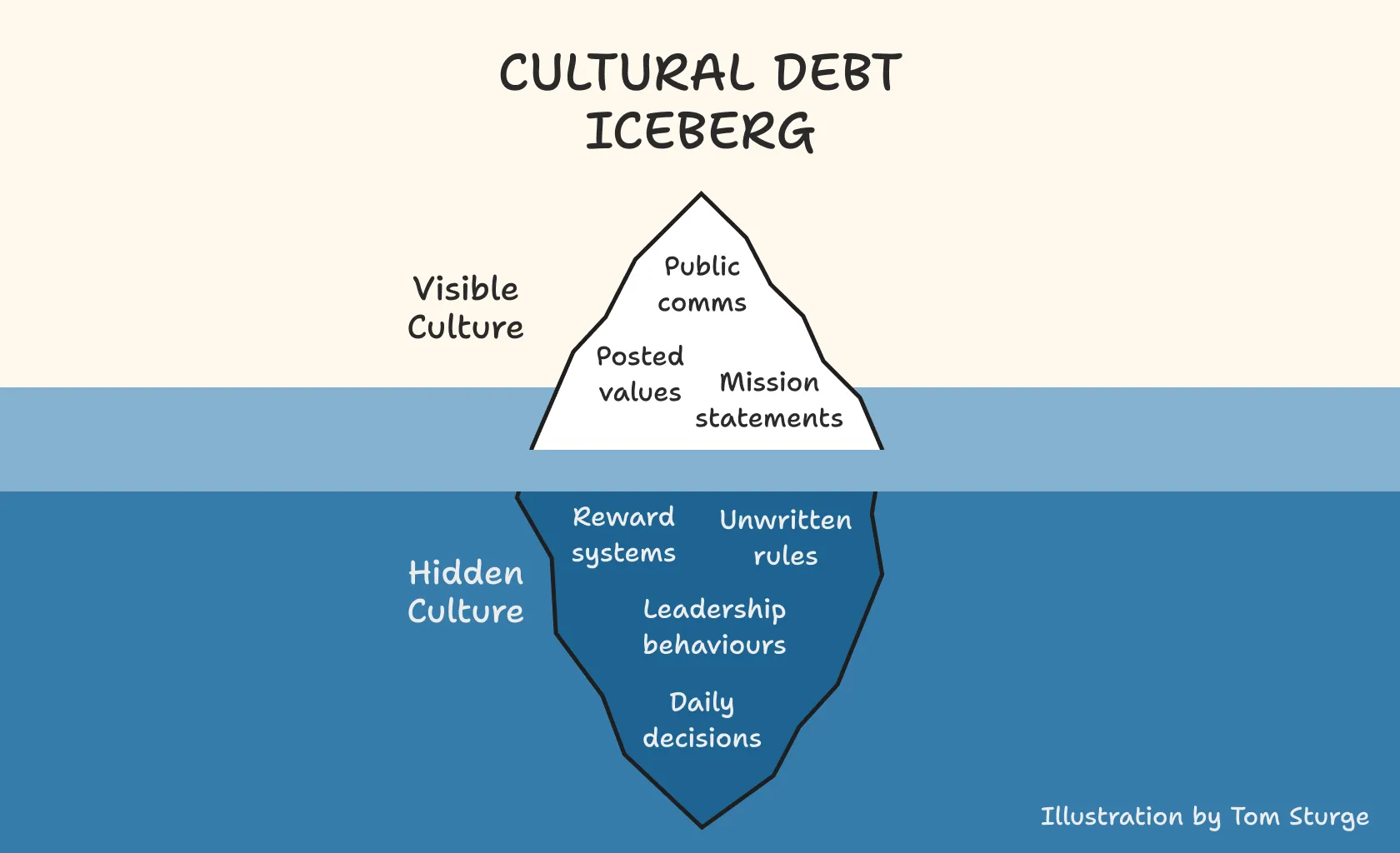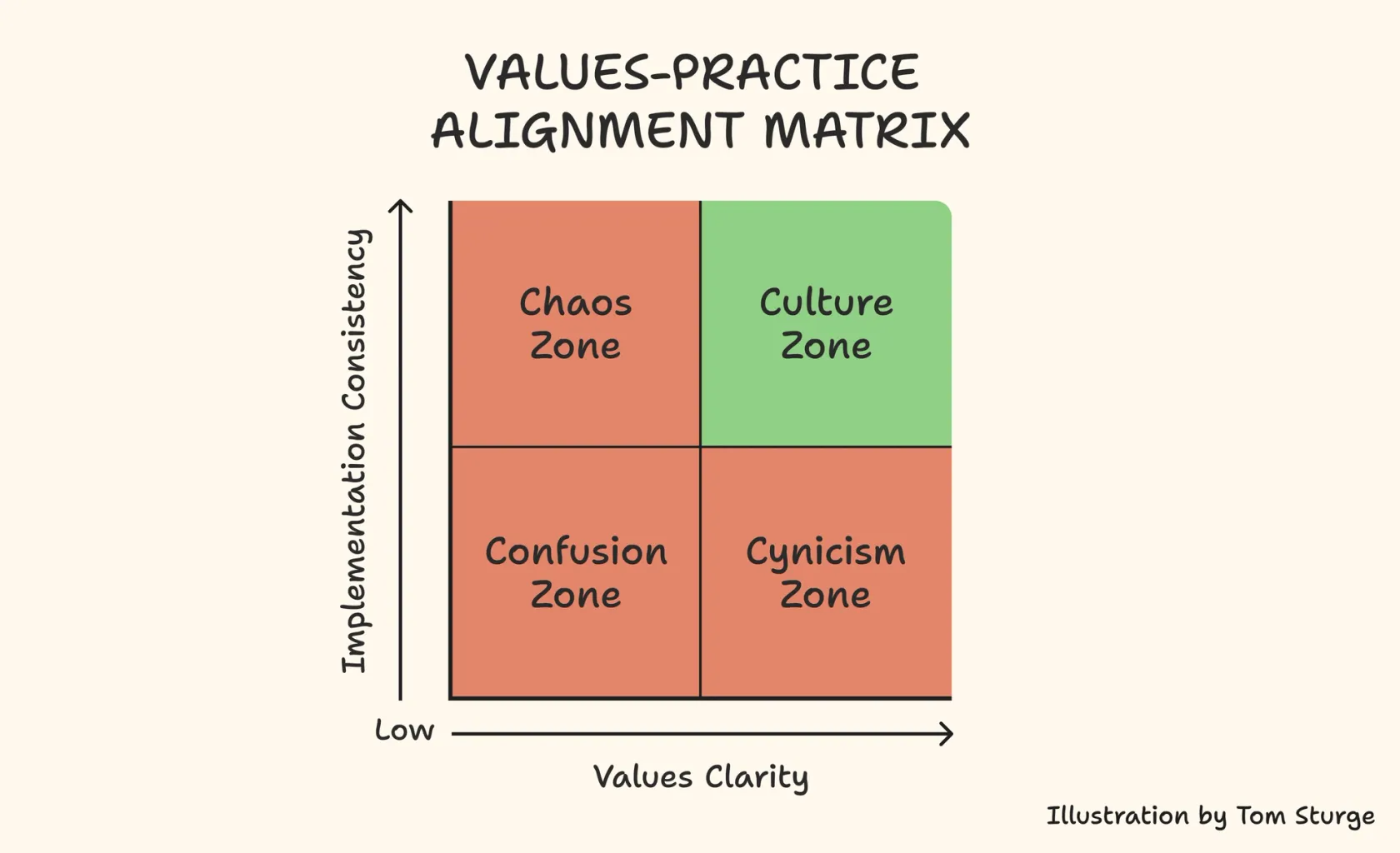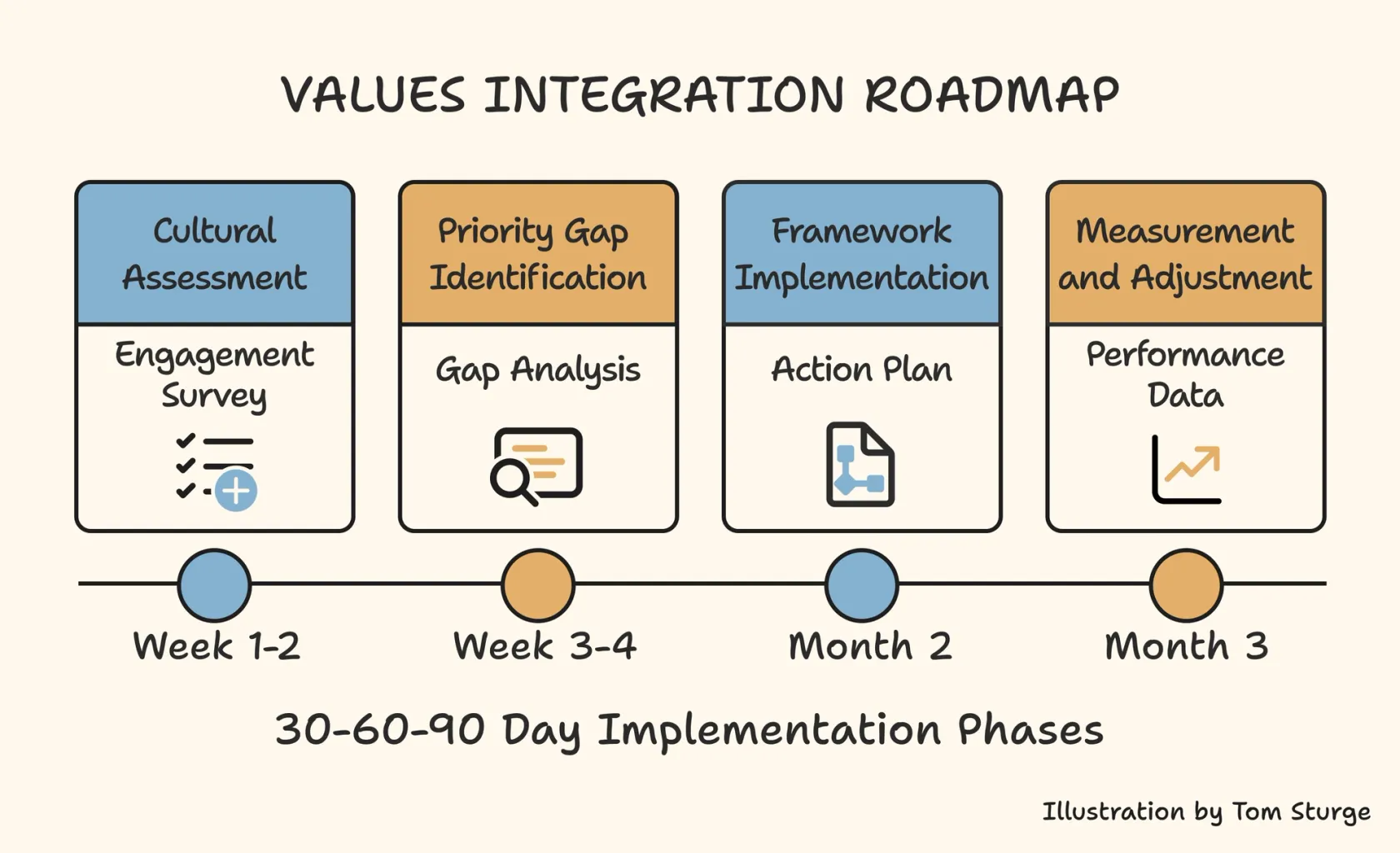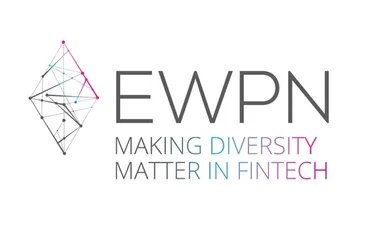title: summary: How posted company values without authentic implementation create "cultural debt" that drives talent exodus and what leaders can do about it. topic: culture date published: [Date]
The statistics are damning. 58% of employees quit due to toxic work culture, whilst 55% would resign if their organisation's culture didn't align with their personal values. Yet here's the twist most leaders miss: many toxic cultures start with beautiful values statements posted on office walls and company websites.
"Innovation," "Collaboration," "Work-life balance," "Diversity and inclusion." The words look inspiring in carefully designed graphics. The problem emerges when these aspirational statements become disconnected from daily operational reality, creating what I call "cultural debt" - the gap between stated values and lived workplace experience.
Like technical debt in software development, cultural debt compounds over time. Unlike technical debt, it directly drives the talent exodus costing organisations billions.
The Hidden Cost of Values Theatre
Cultural debt manifests in ways that engineering leaders know all too well. You promote "innovation" values whilst punishing anyone whose experiments fail. You celebrate "collaboration" whilst rewarding individual heroics that undermine team success. You champion "work-life balance" whilst promoting managers who respond to emails at midnight and expect the same from their teams.
The financial impact is staggering. U.S. companies spent nearly $900 billion replacing employees who quit in 2023, with research showing that toxic culture is 10 times more likely to cause turnover than compensation issues. Add the hidden productivity costs - disengagement costs companies about 34% of a disengaged employee's salary in lost productivity - and the true expense becomes clear.
Yet the early warning signs often hide in plain sight. When only 38% of UK employees trust their senior leadership and 25% feel voiceless in their organisation, you're watching cultural debt accumulate in real time.
Think of cultural debt like an iceberg. Above the waterline sit posted values, mission statements, and public communications - the visible parts everyone sees. Below lurk daily decisions, unwritten rules, actual reward systems, and leadership behaviour patterns that determine what your culture truly values. When these levels contradict each other, cynicism spreads faster than any company-wide email.

Why Scale-Ups Fall Into the Values Trap
Growing companies face unique pressures that make cultural debt almost inevitable. With 51% of employees actively seeking new opportunities, urgency to hire quickly whilst scaling operations creates perfect conditions for values erosion.
Engineering departments suffer most acutely. Technical teams spot inconsistencies between stated values and management decisions with laser precision. When leaders claim to value "continuous learning" but refuse time allocation for skill development, or promote "psychological safety" whilst micromanaging technical decisions, engineering teams lose trust rapidly.
The retention mathematics become brutal. Replacing employees costs 30-200% of their salary, but departing knowledge often proves irreplaceable. Senior engineers leaving due to cultural misalignment take institutional knowledge, team relationships, and hard-won technical insights with them.
Meanwhile, companies with strong cultures see 4 times increase in revenue growth compared to those with weak cultures. Cultural debt's opportunity cost extends far beyond replacement expenses.

Building Authentic Values Alignment
Repairing cultural debt requires systematic approaches that treat values as operational frameworks rather than aspirational decoration.
Start With Honest Cultural Assessment
Before fixing anything, understand your current reality. Survey team experience versus stated values, but dig deeper than standard engagement surveys. Ask specific questions: "When did you last see our values influence a difficult decision?" "Which company values feel authentic in daily work?" "Where do you see gaps between stated and lived values?"
This matters because 70% of variance in employee engagement relates directly to managers. Your middle management layer creates or destroys values alignment through thousands of small daily decisions.
Create Values-Based Decision Frameworks
Transform values from wall decorations into decision-making tools. When evaluating technical approaches, vendor choices, or team structure changes, explicitly consider alignment with stated values. Document these discussions so teams understand that values genuinely influence operational choices.
Build accountability mechanisms making values alignment visible. Include values assessment in performance reviews, promotion criteria, and team retrospectives. When someone demonstrates values-aligned behaviour under pressure, celebrate it publicly.
"Psychological safety is critical for employees to be productive, strive for excellence, innovate, and generally bring their best selves to the workplace. Toxic work cultures are a breeding ground for things that undermine psychological safety."
Address Misalignments Systematically
69% of employees would work harder if they received more recognition, yet many organisations only recognise results whilst ignoring behaviours that created them. Start rewarding process, not just outcomes.
Focus on the most damaging disconnects first. If "collaboration" appears in your values but promotion processes reward individual achievement exclusively, address that immediately. If "innovation" matters but teams get punished for intelligent failures, change failure responses before launching new innovation initiatives.

The Path Forward
Cultural debt isn't inevitable, but repairing it requires treating values as infrastructure rather than inspiration. Like any infrastructure investment, benefits compound over time whilst neglect costs accelerate.
Companies with authentic values alignment don't just retain talent better - they attract higher-calibre candidates seeking meaningful work environments. 86% of job seekers avoid companies with bad reputations, making values authenticity a competitive advantage in talent markets.
Start this week by auditing one area where stated values might contradict operational reality. Choose something specific and fixable - how you run meetings, make technical decisions, or handle project failures. Document changes, measure impact, and build from there.
The choice isn't between having values or not having them. Values exist in every organisation whether you articulate them or not. The choice is whether those values serve your team's success or silently undermine it through accumulated cultural debt.
When posted values finally match daily decisions, you'll discover something remarkable: retention problems start solving themselves.




